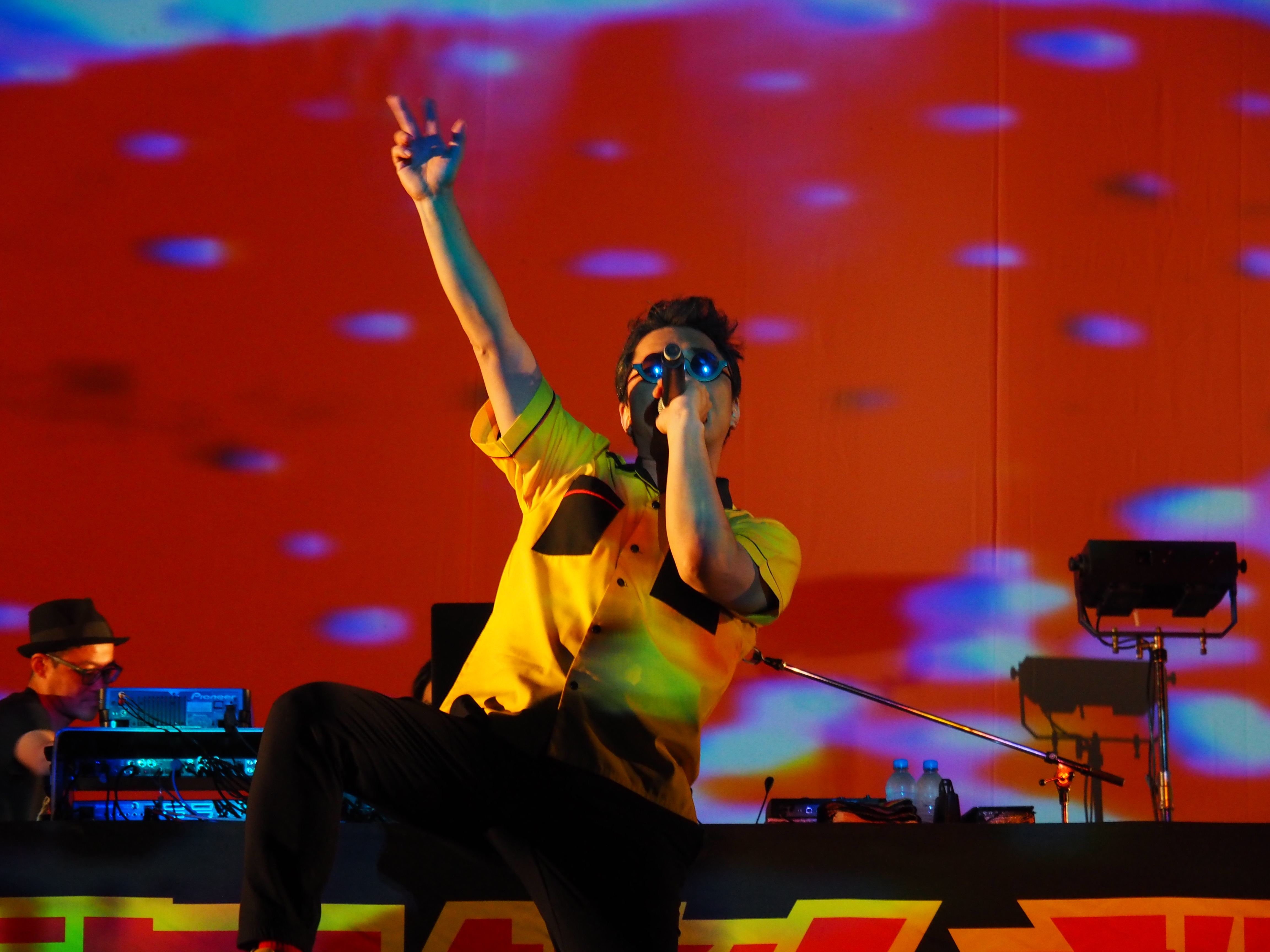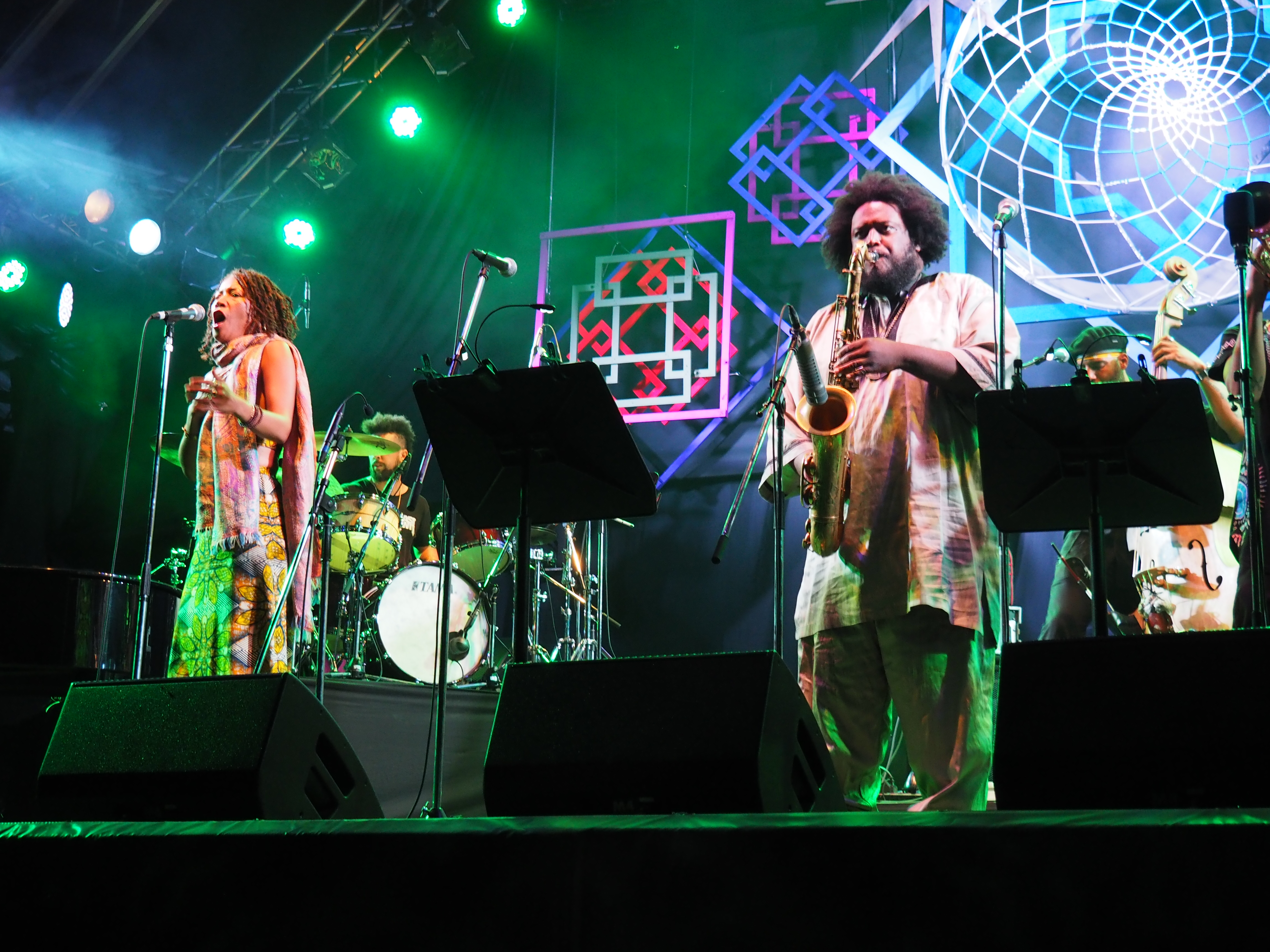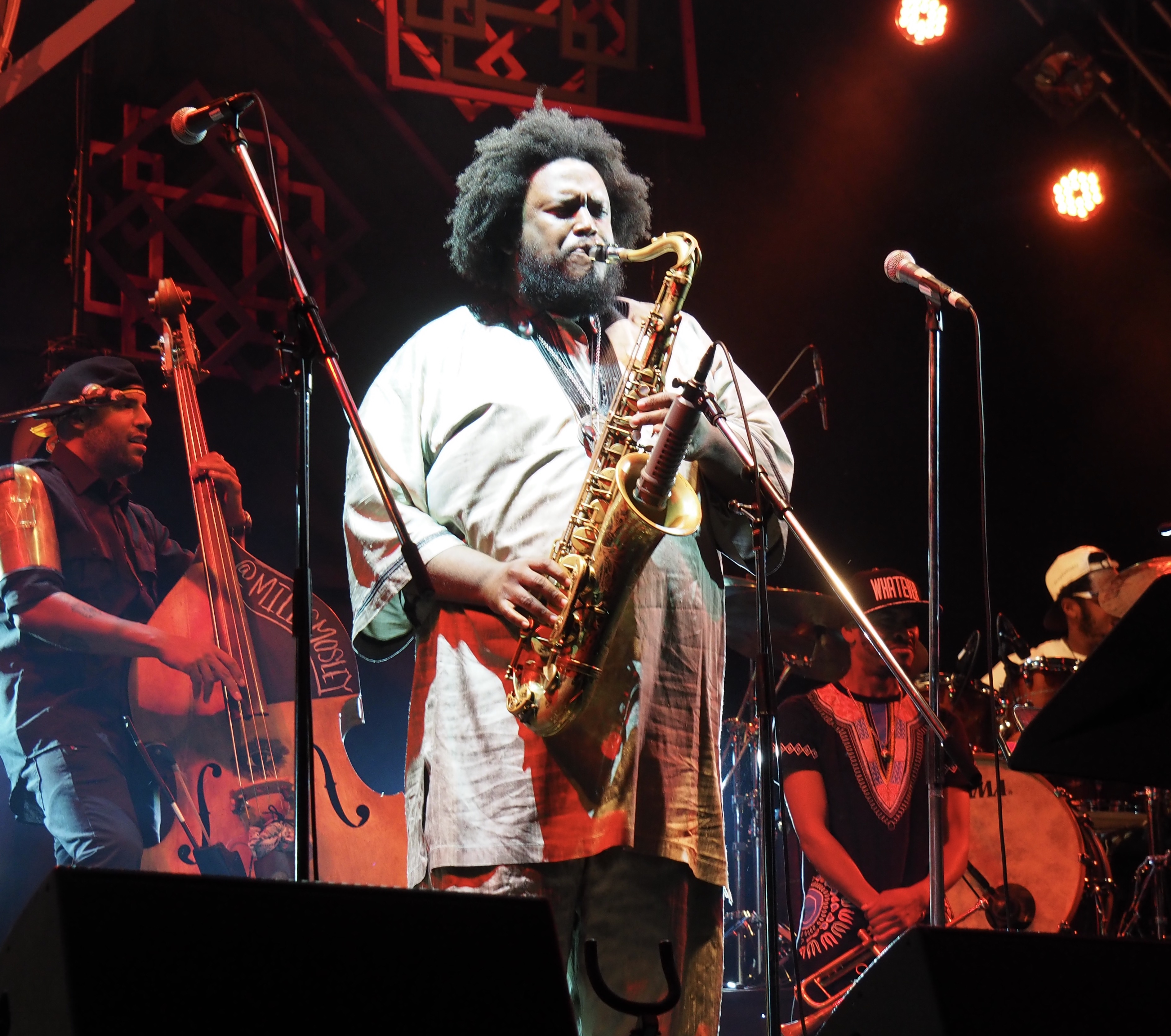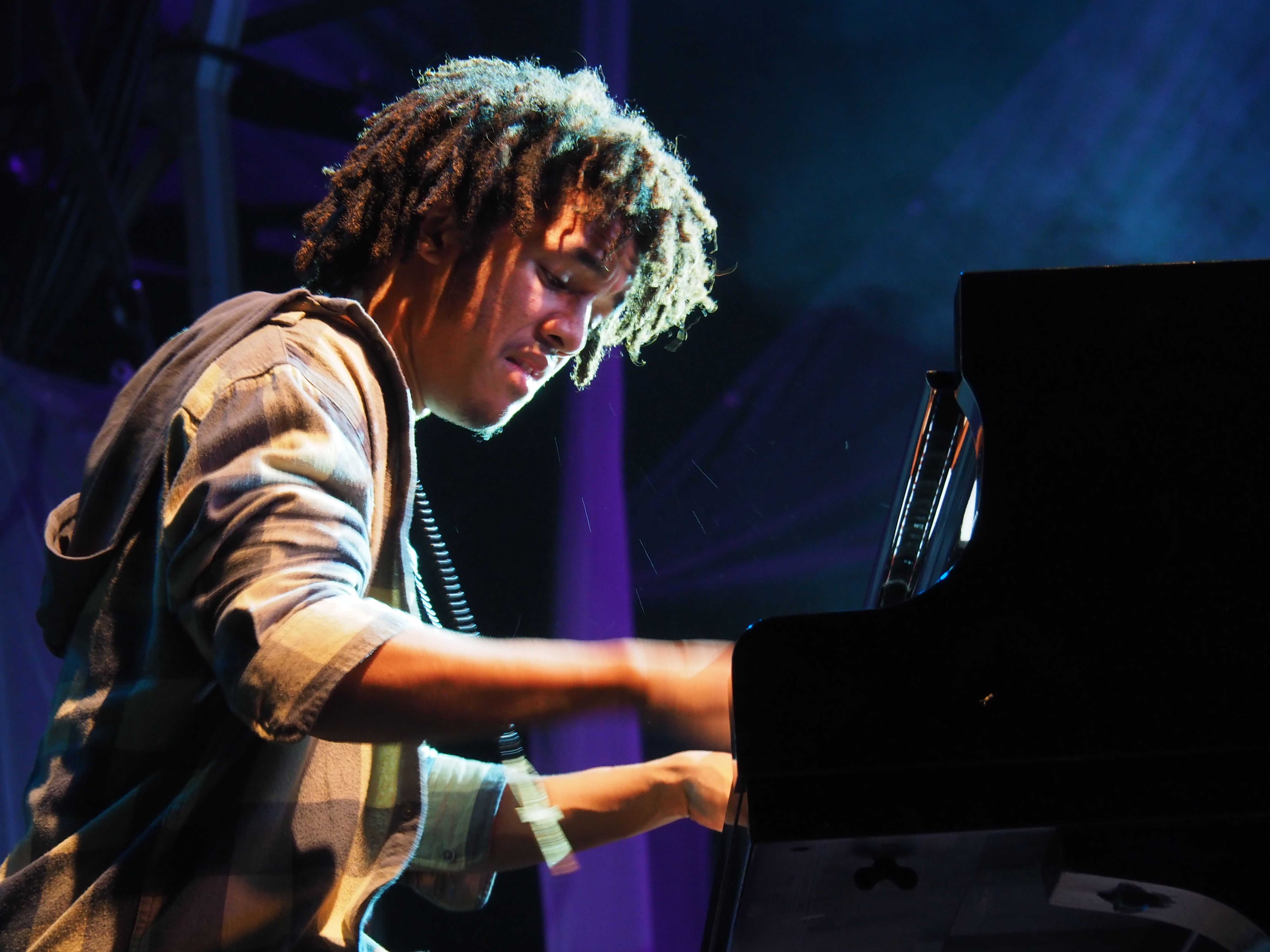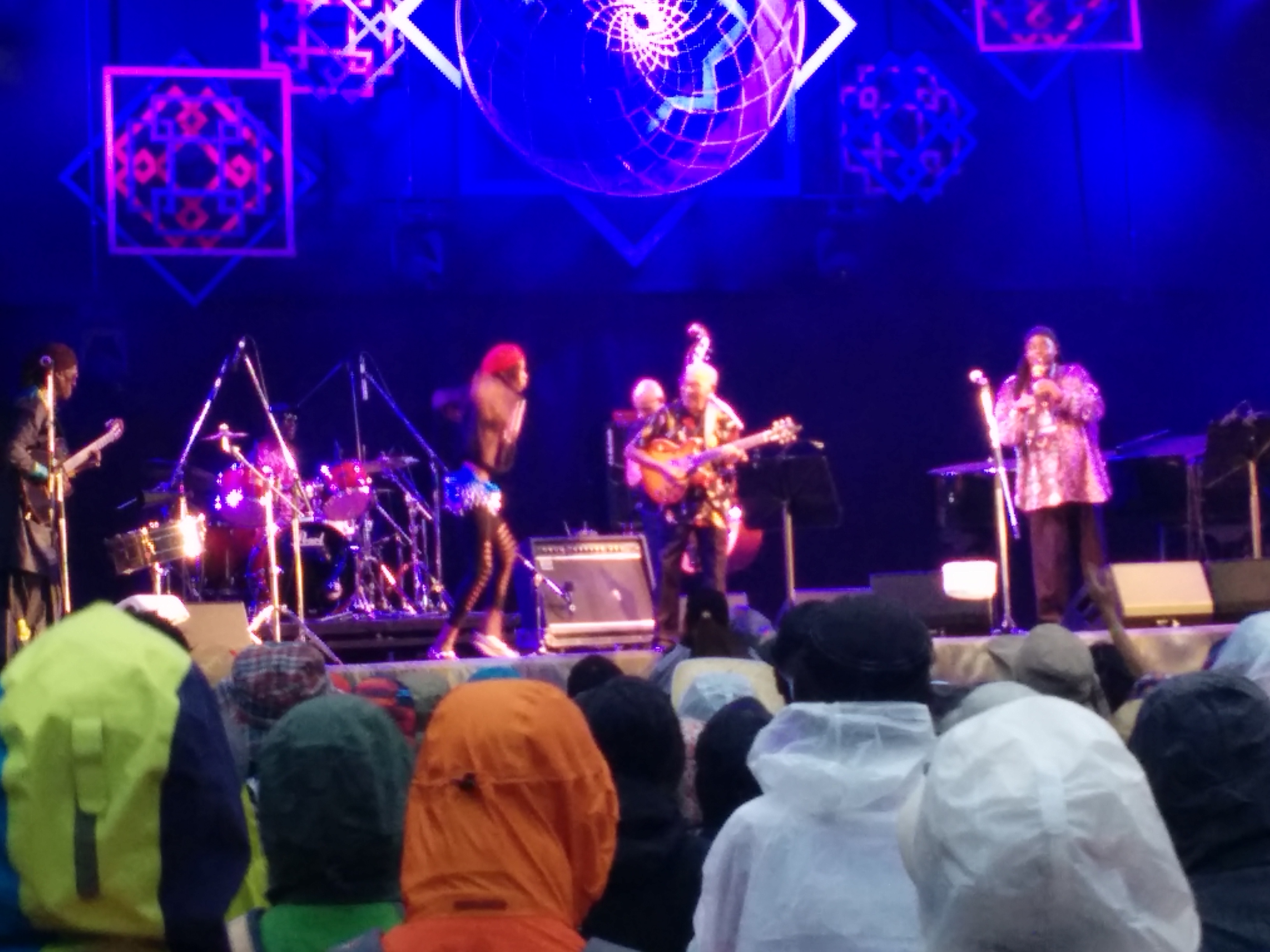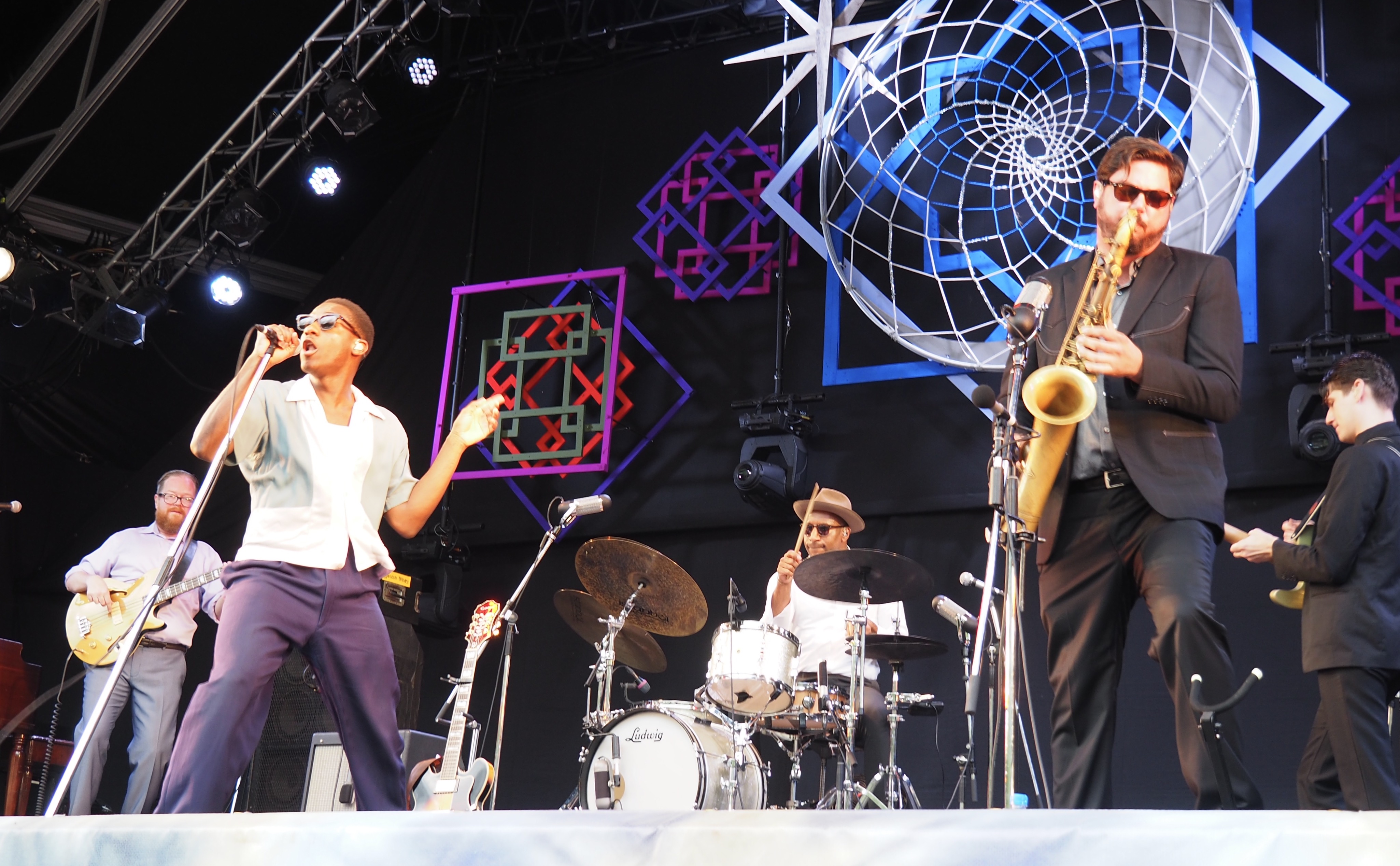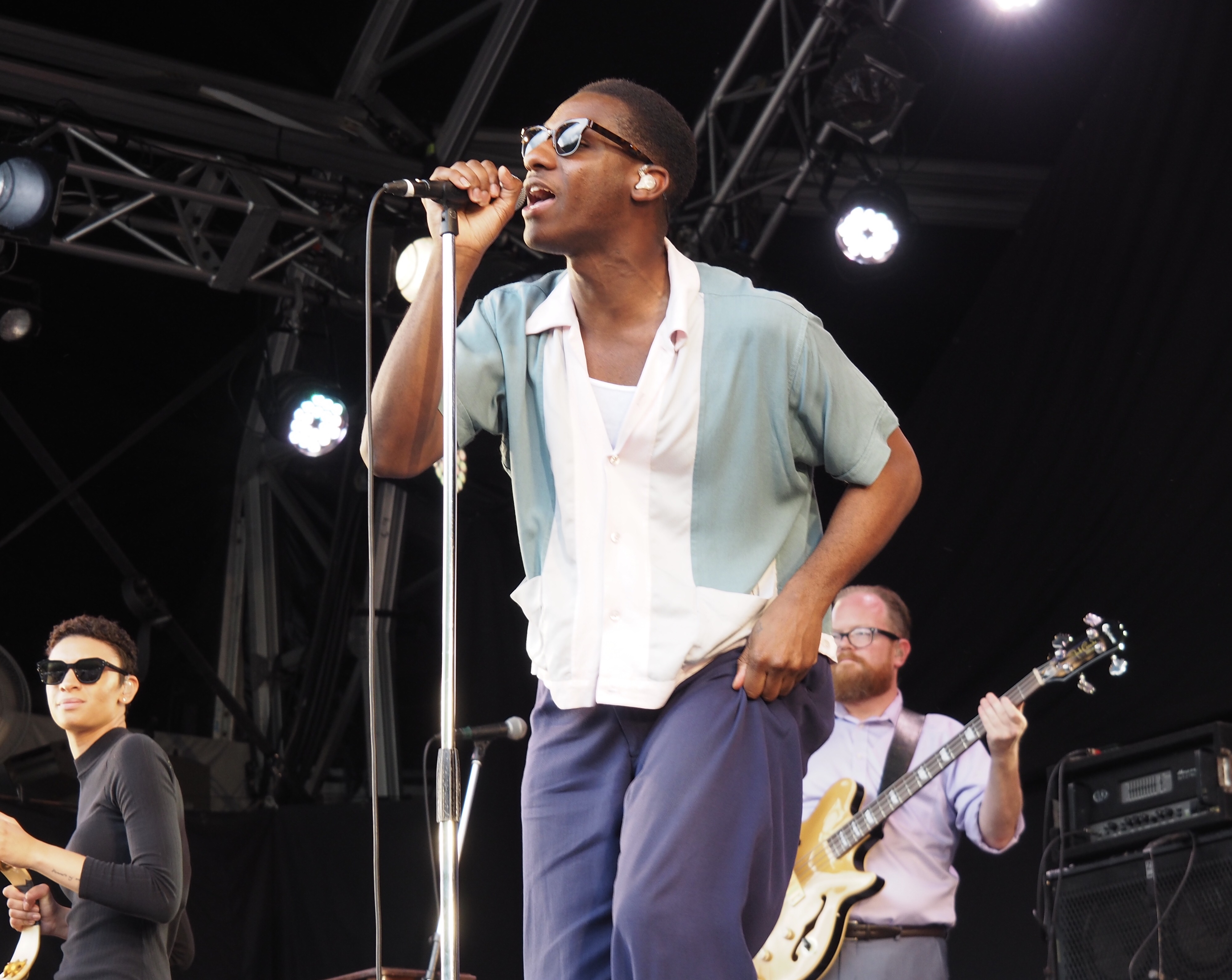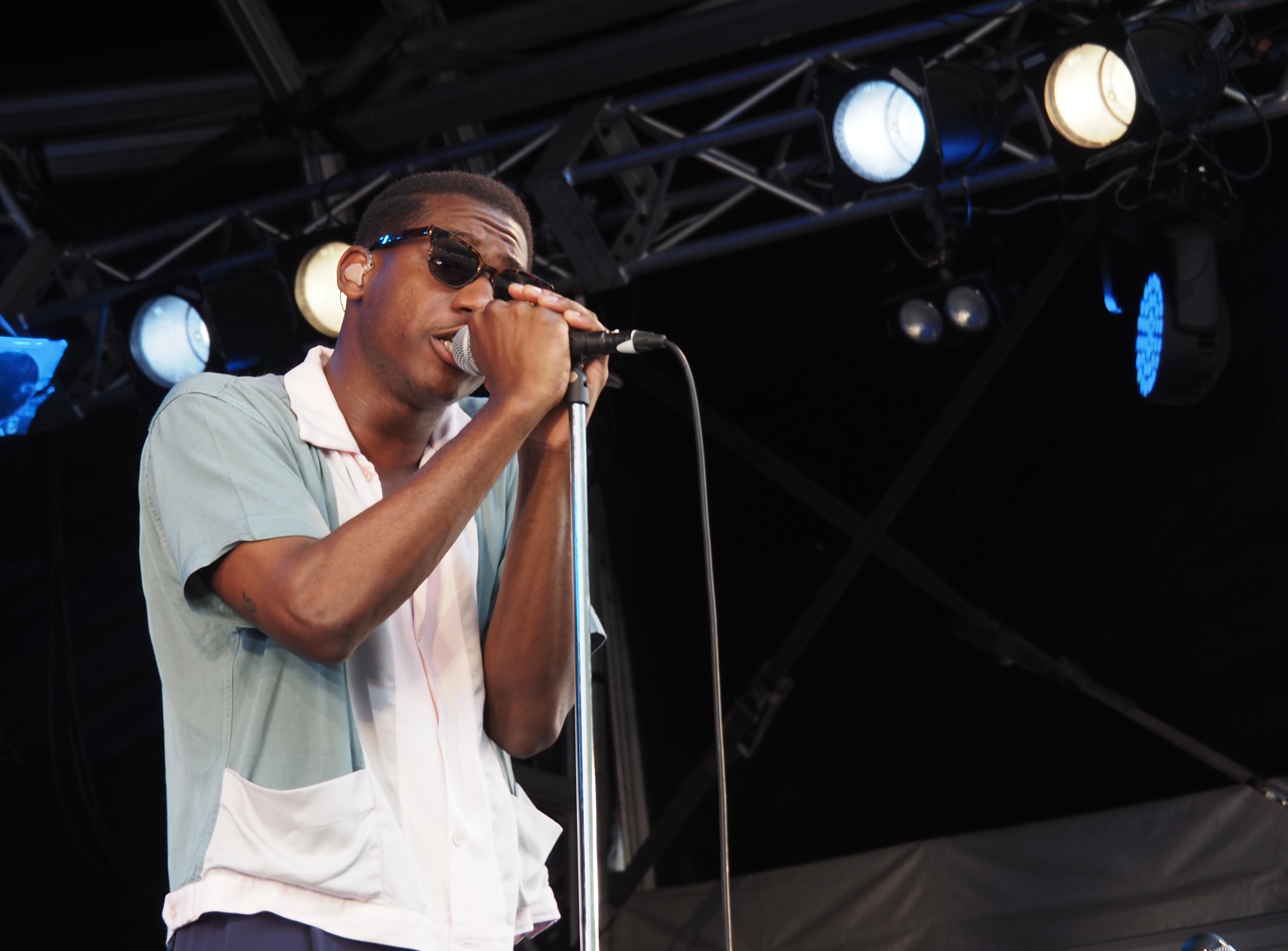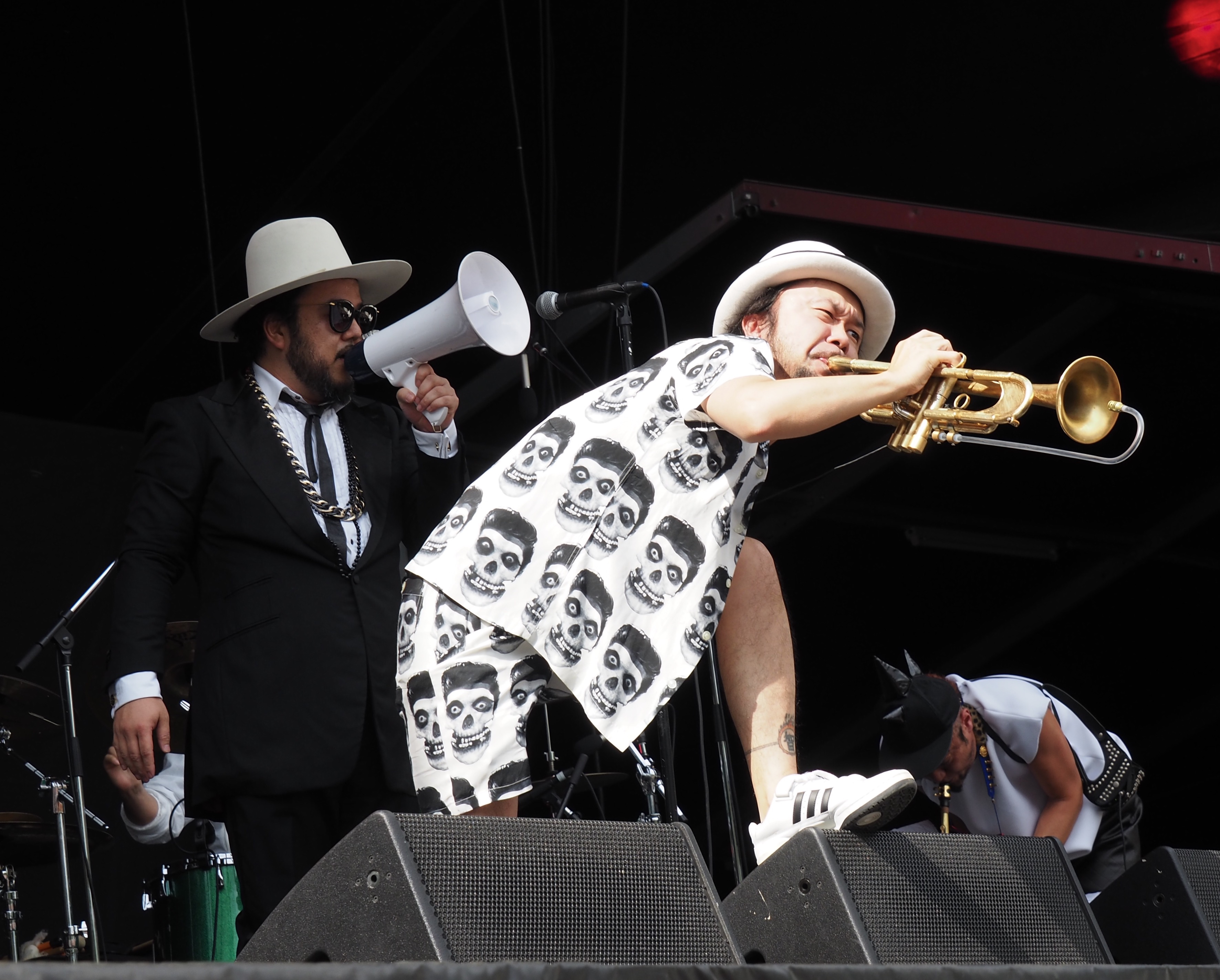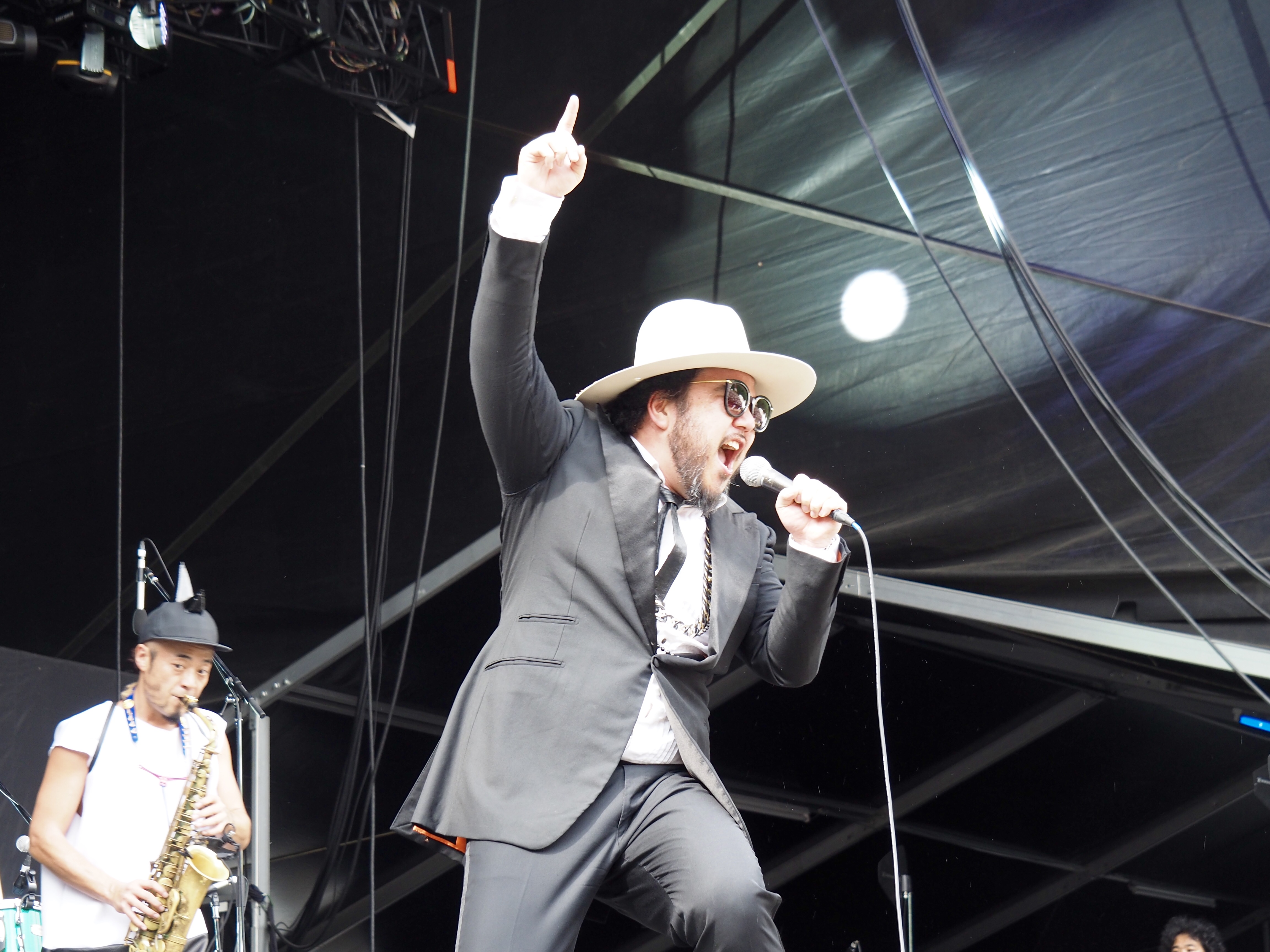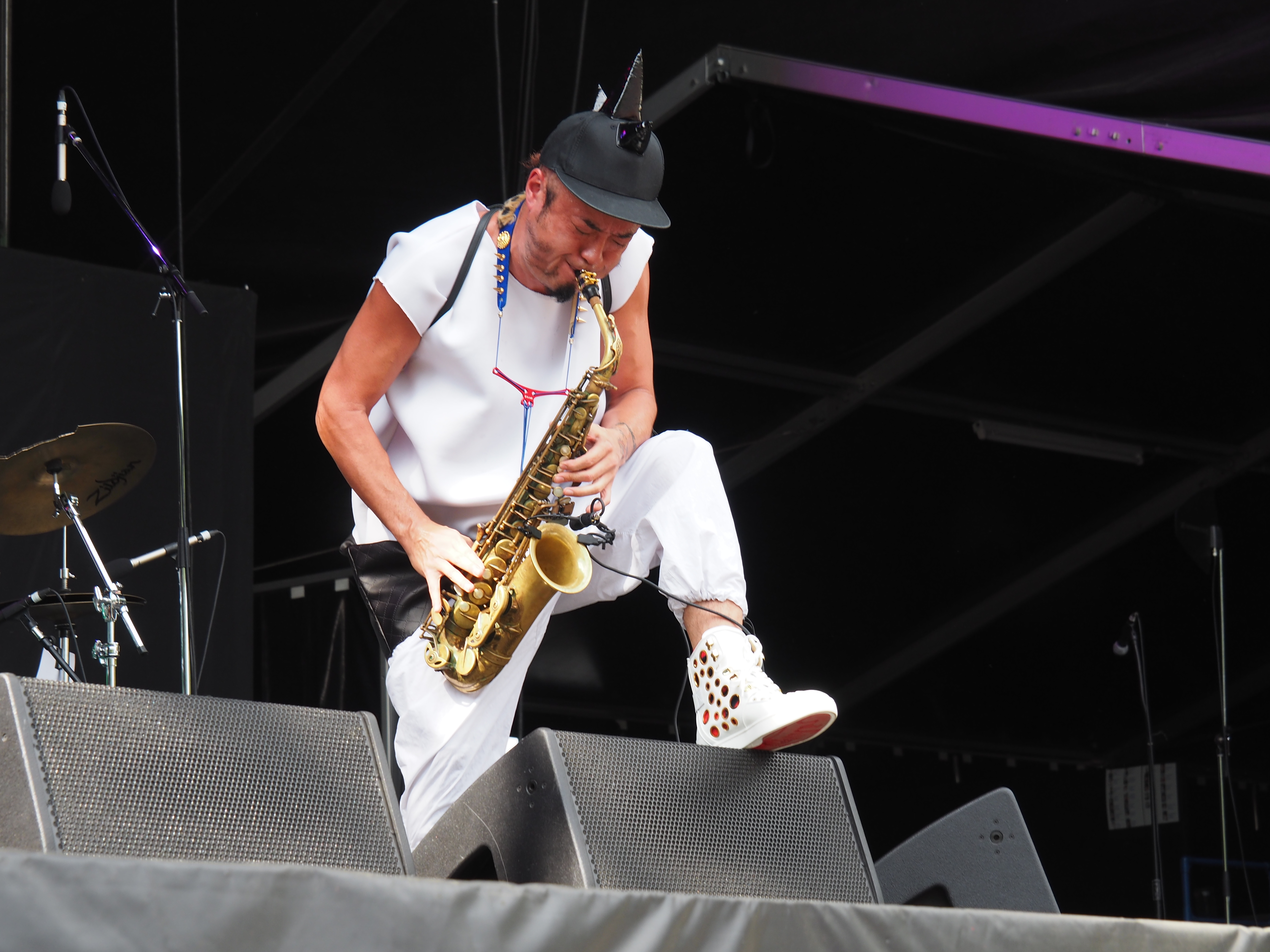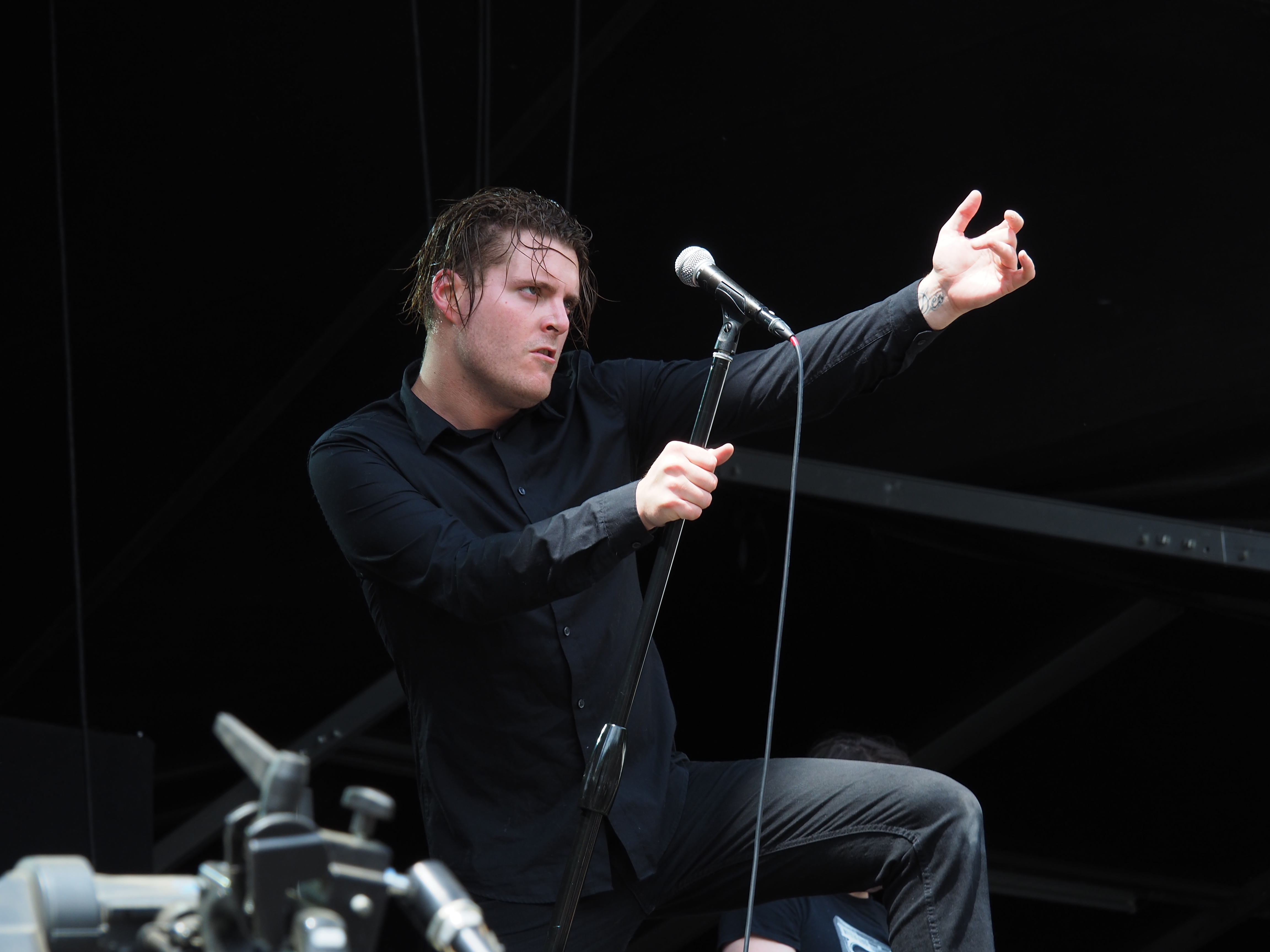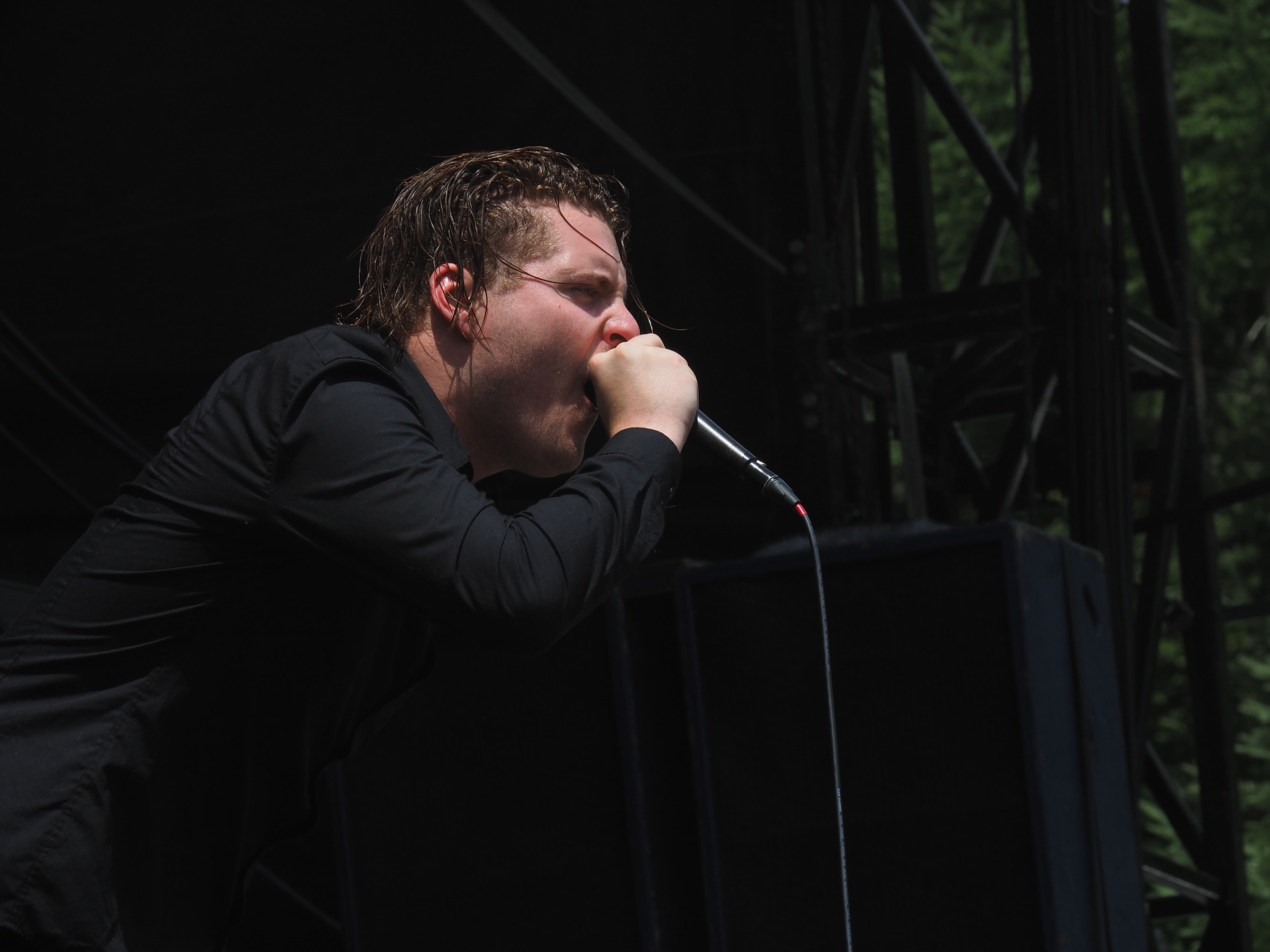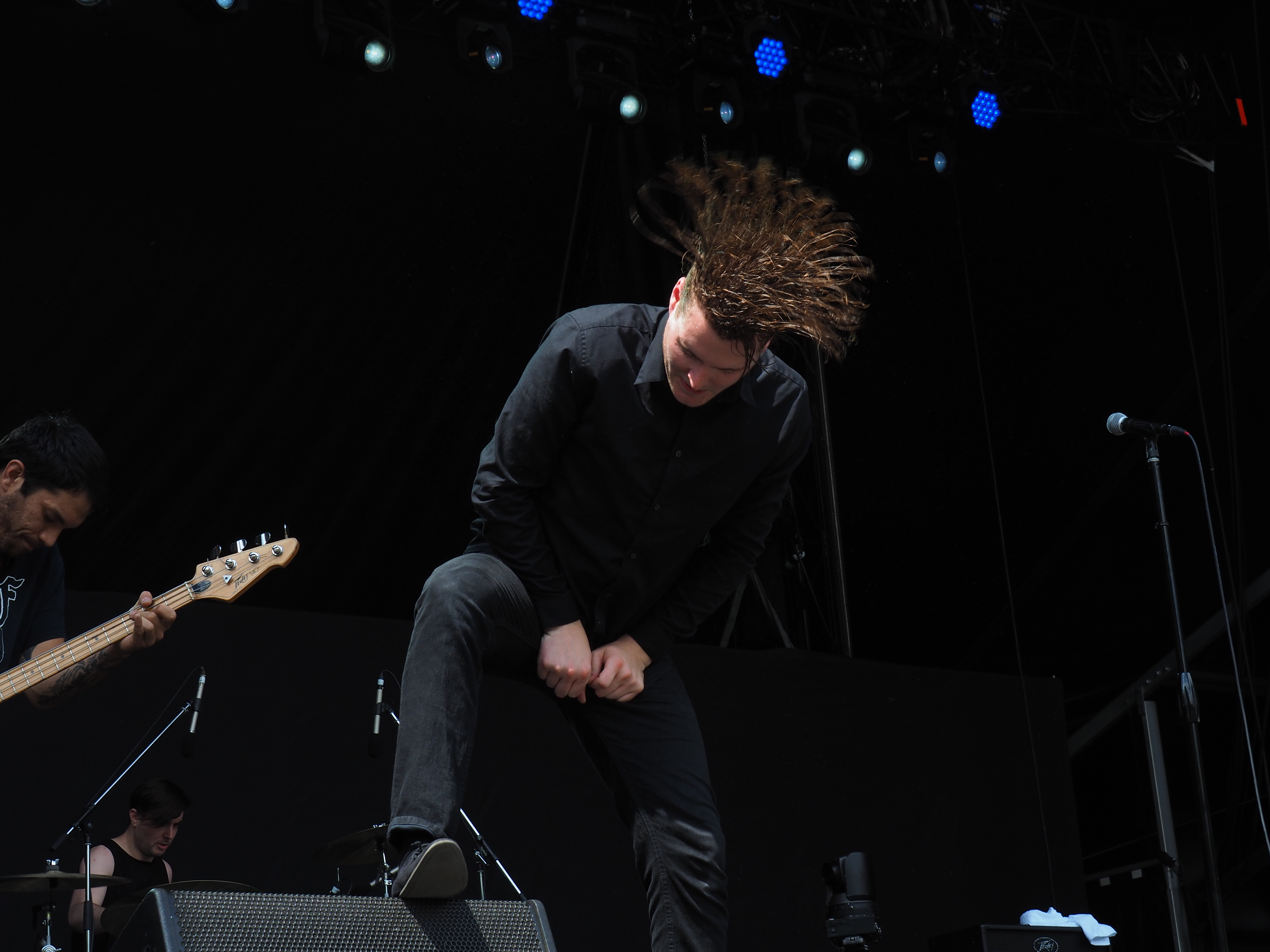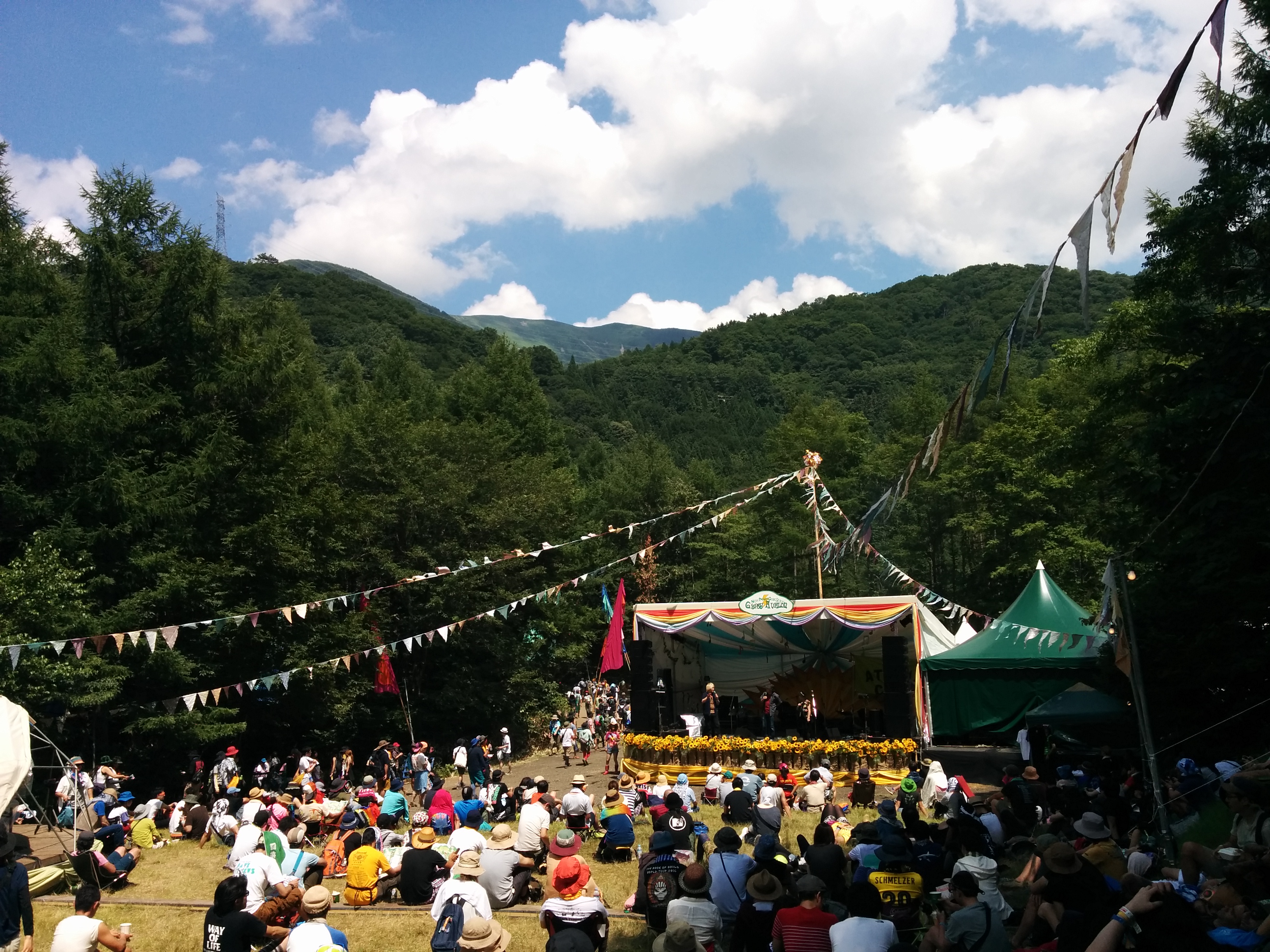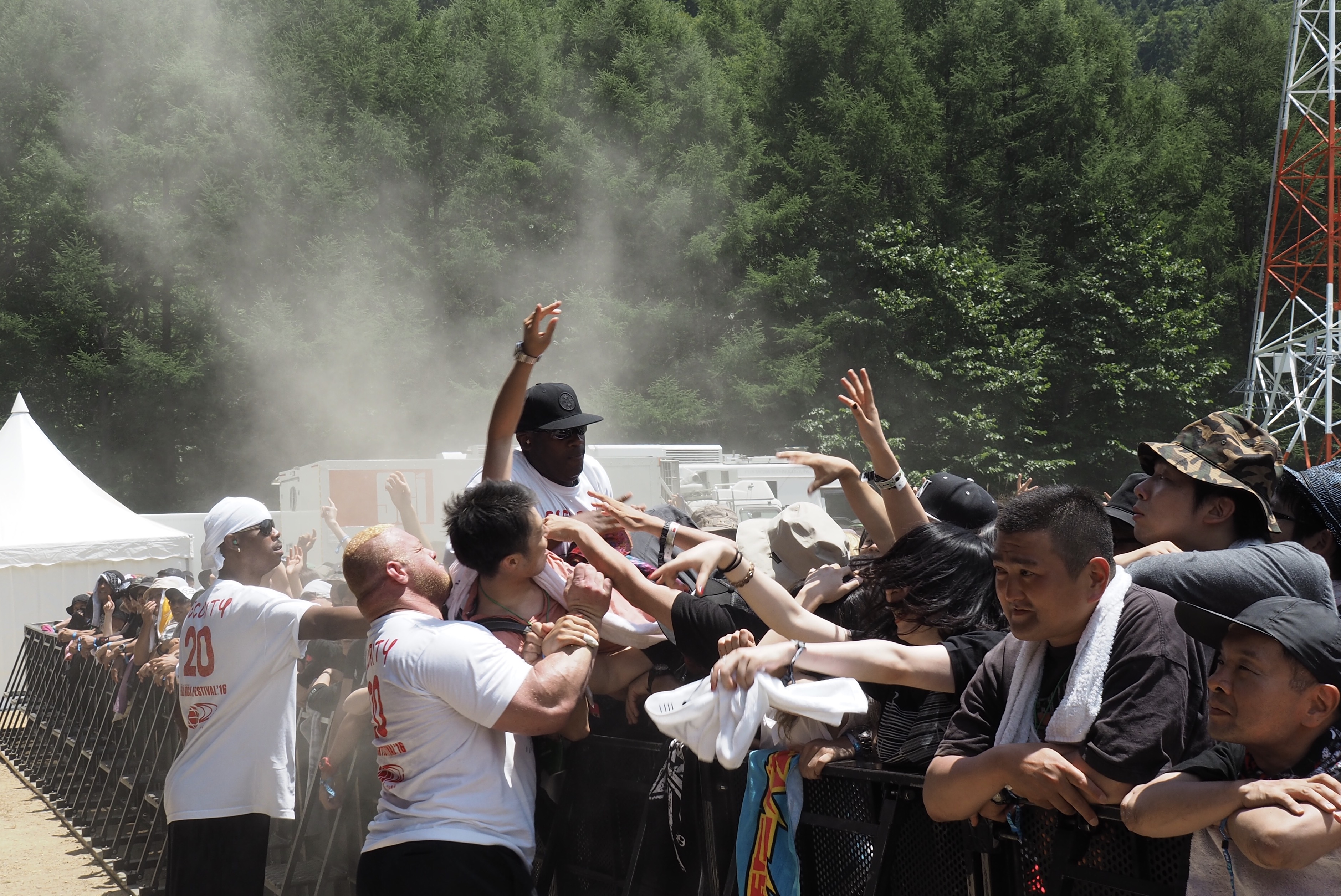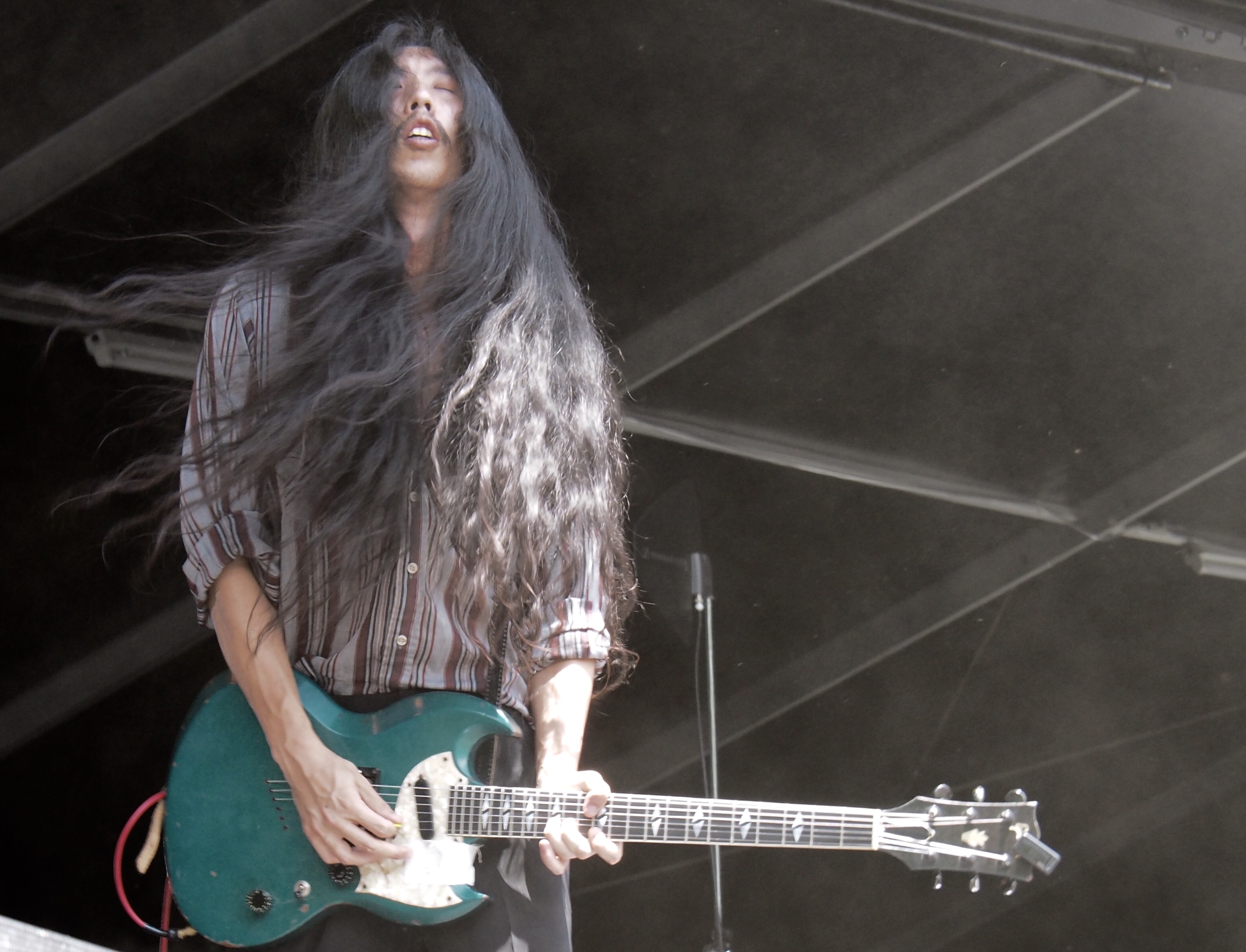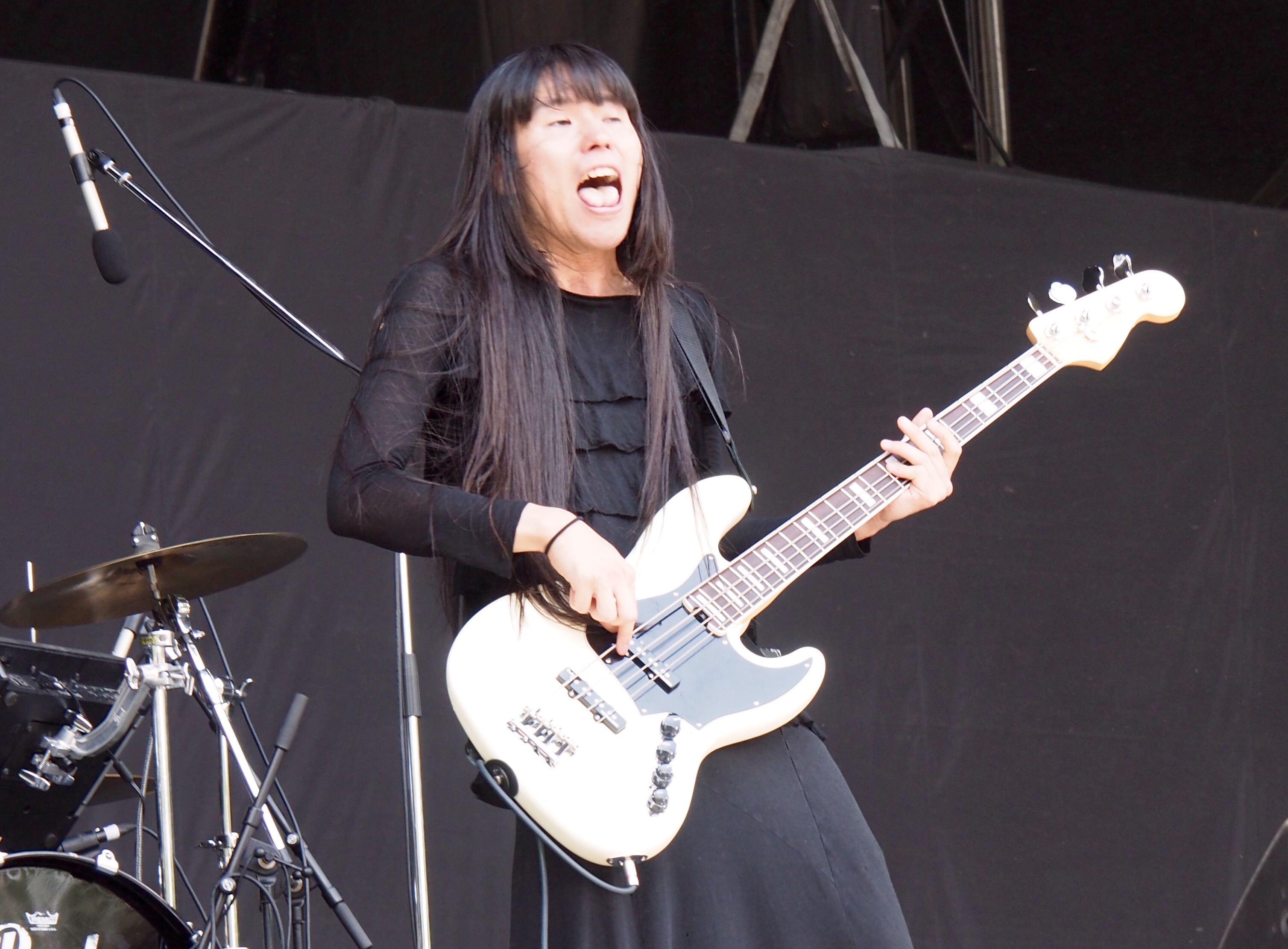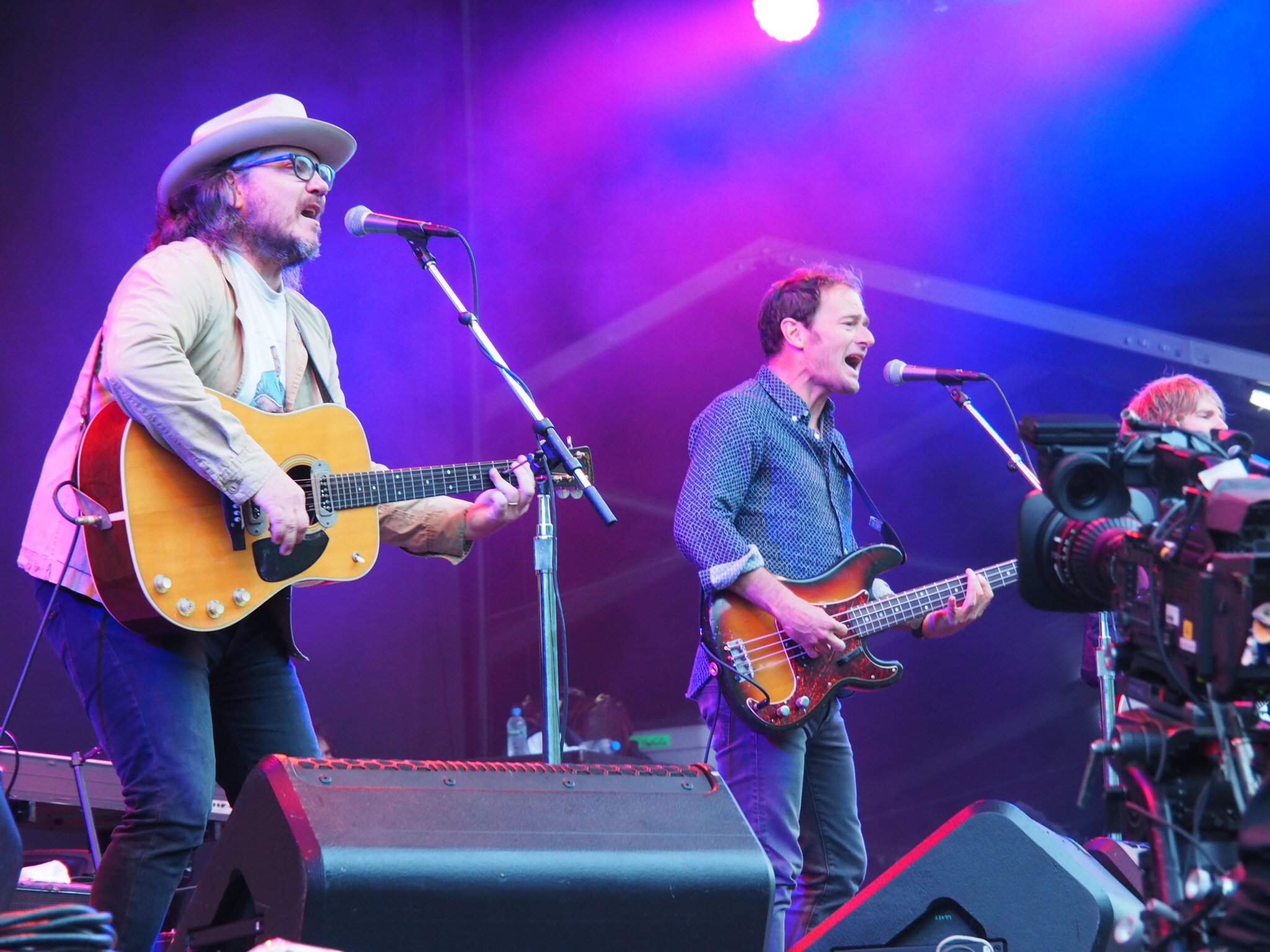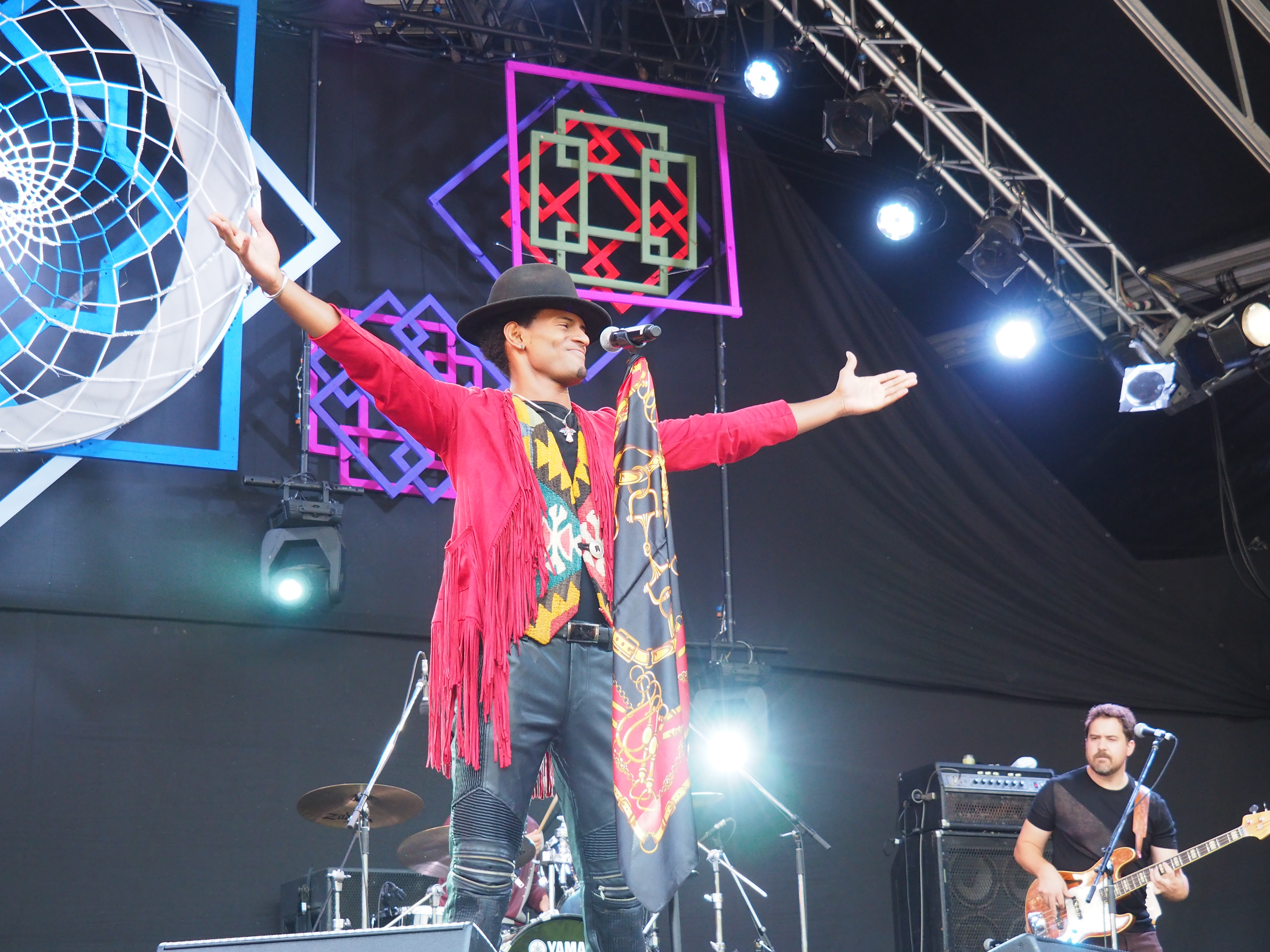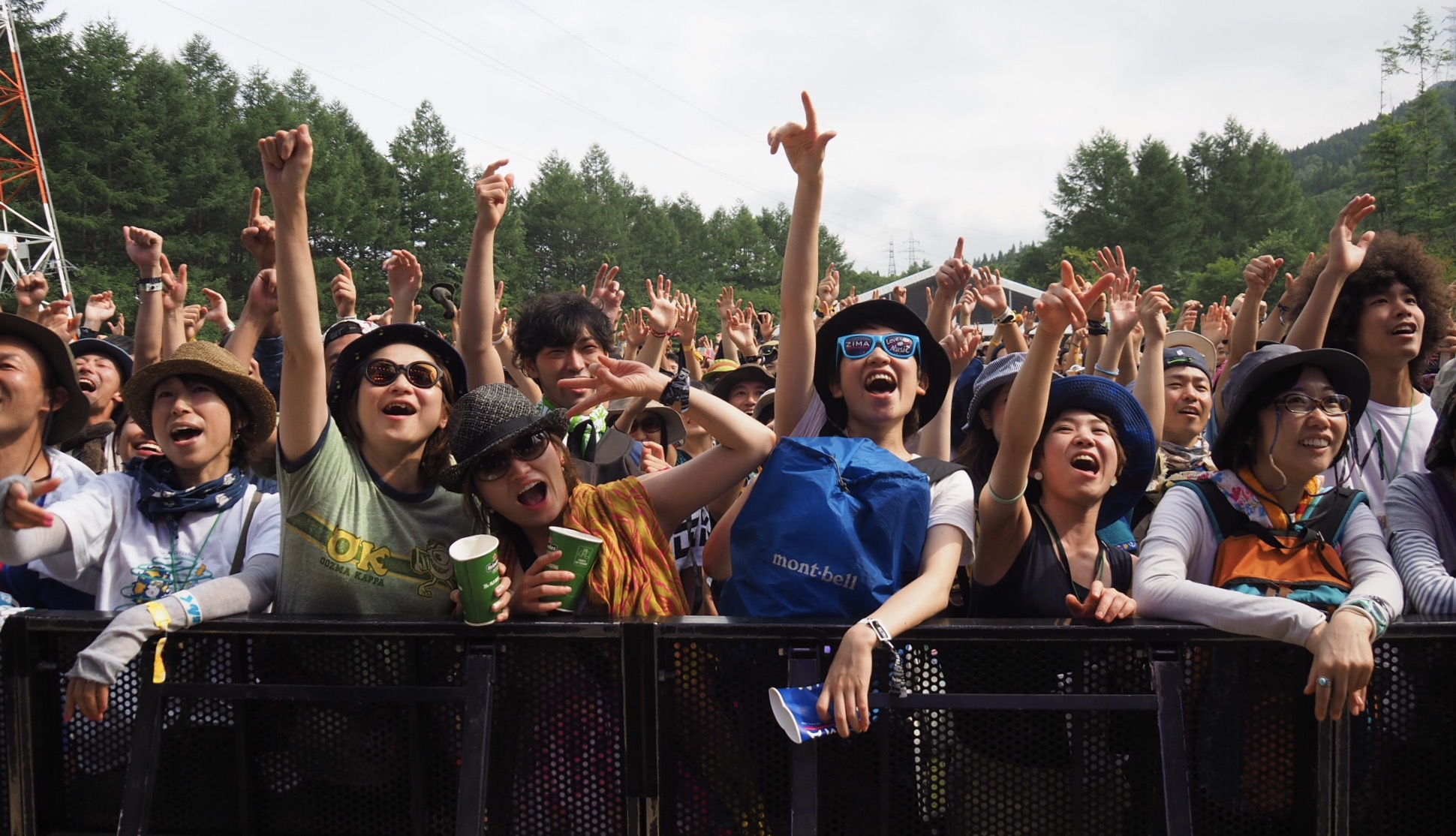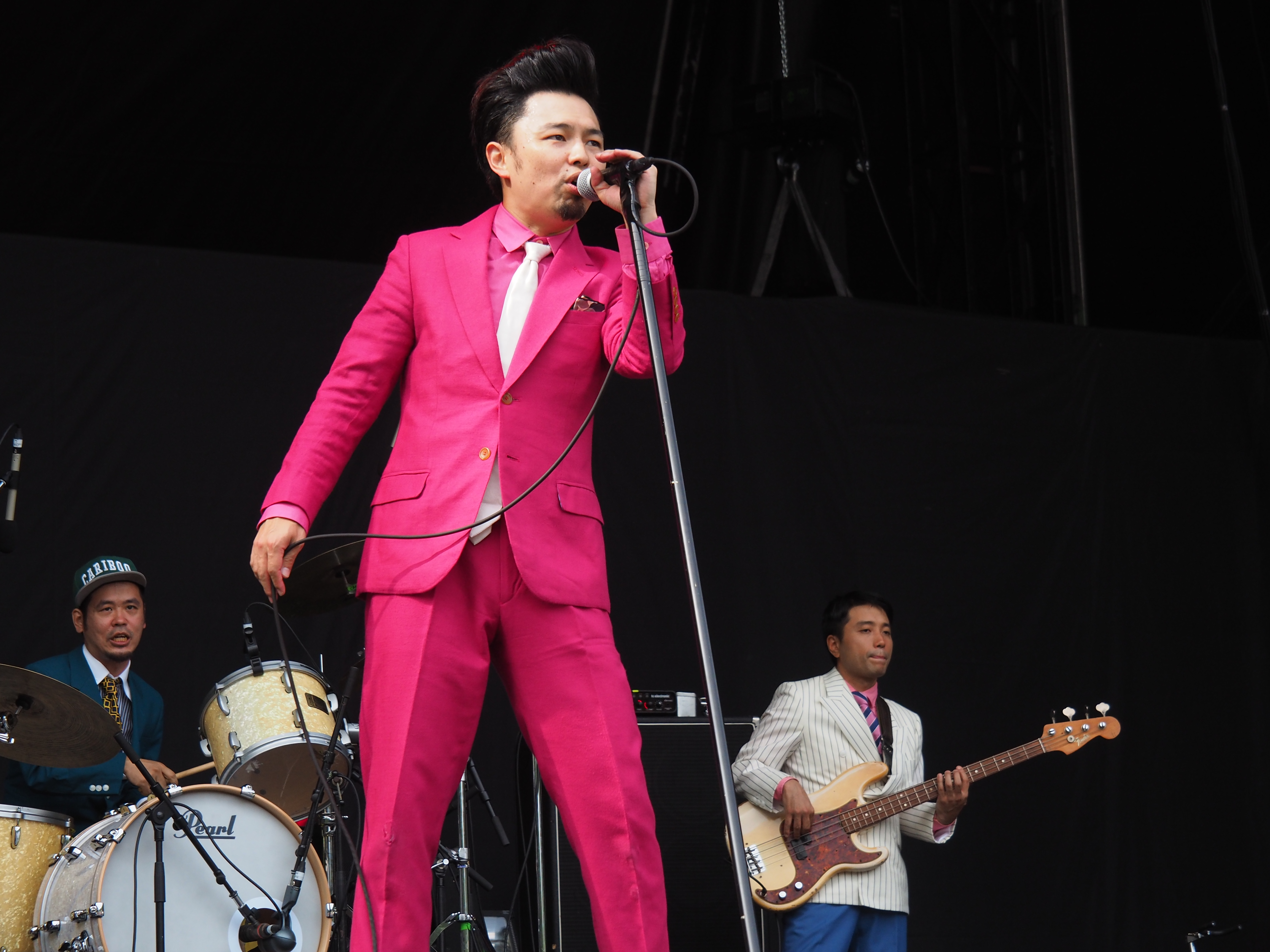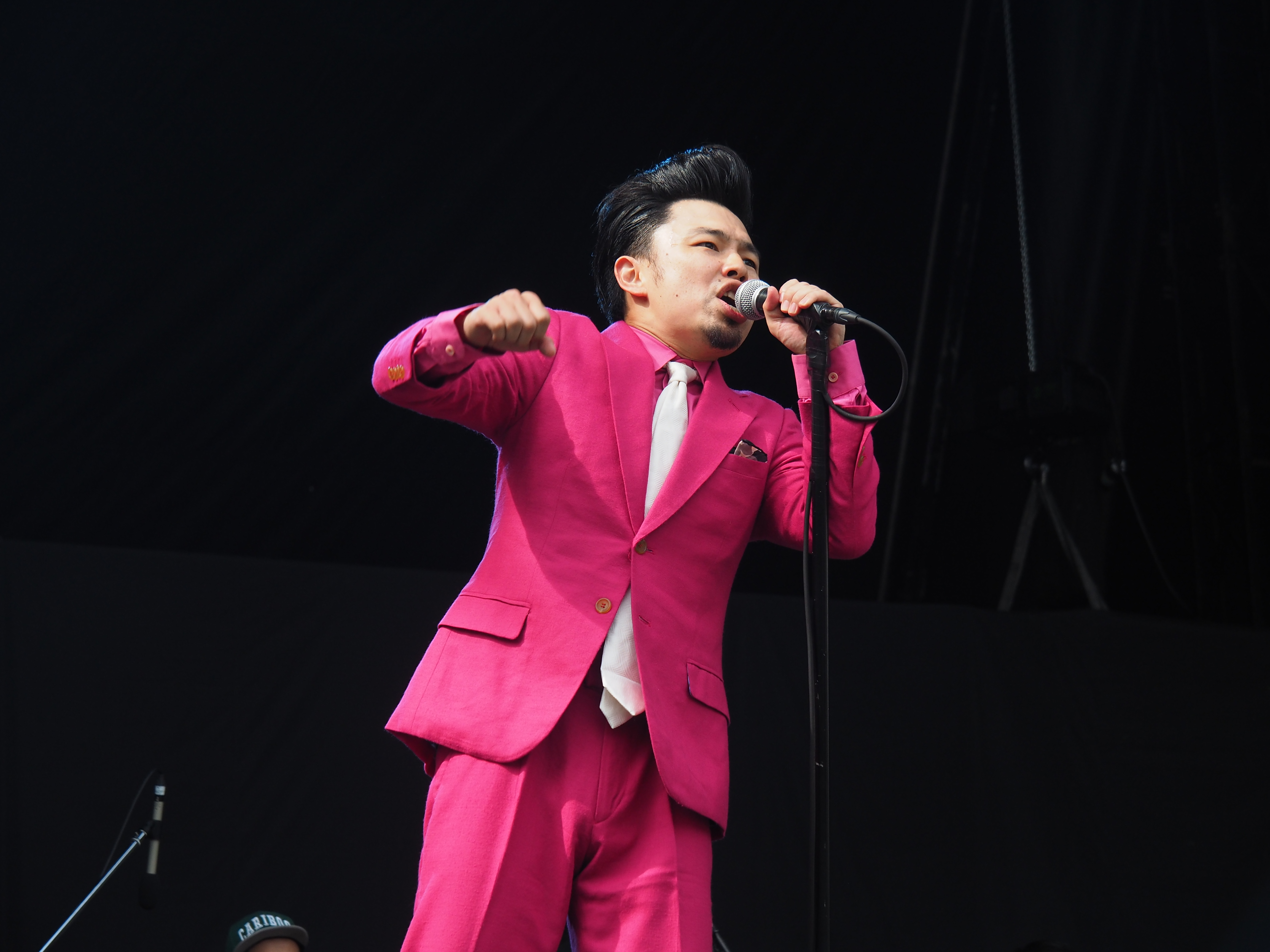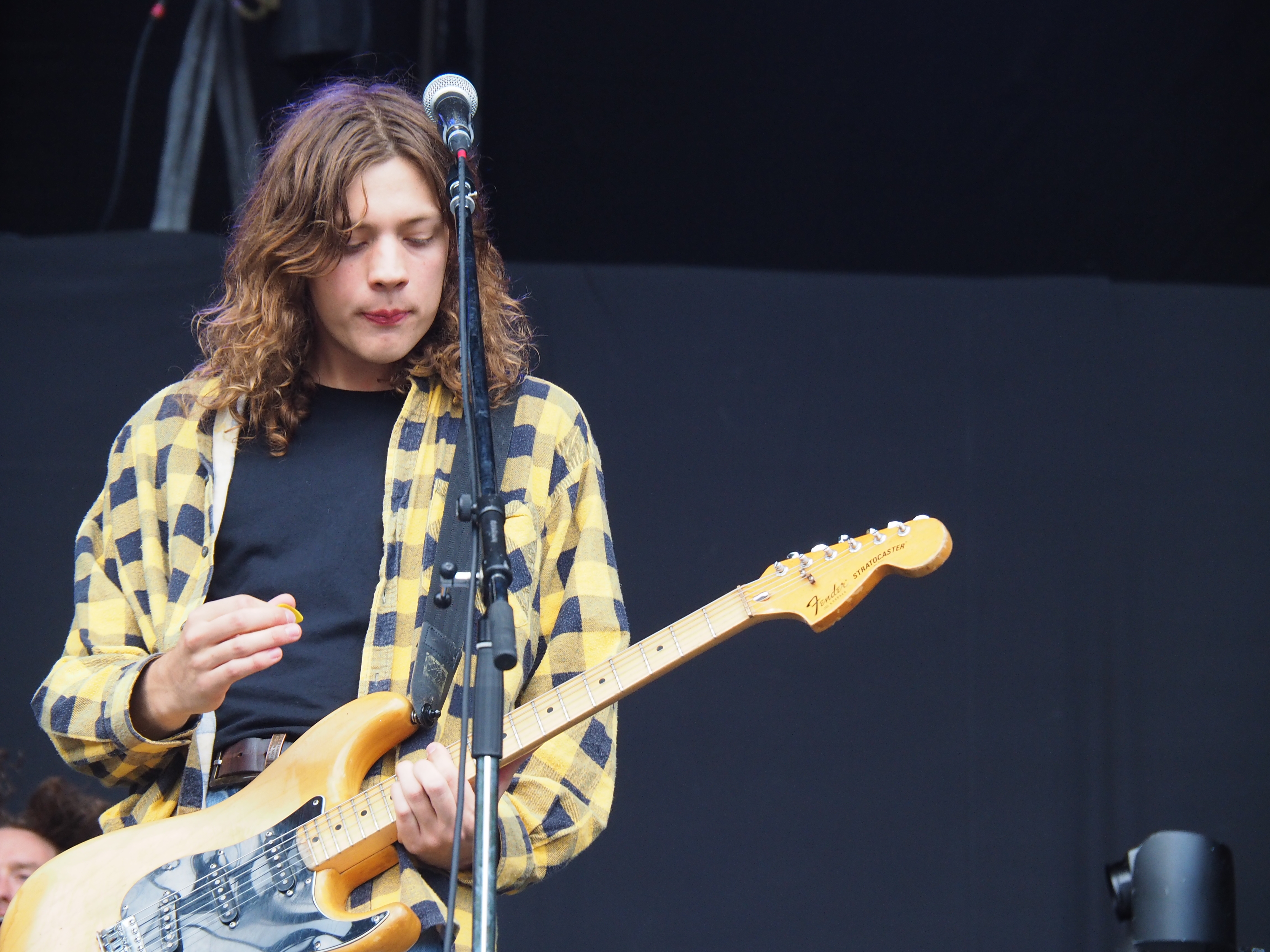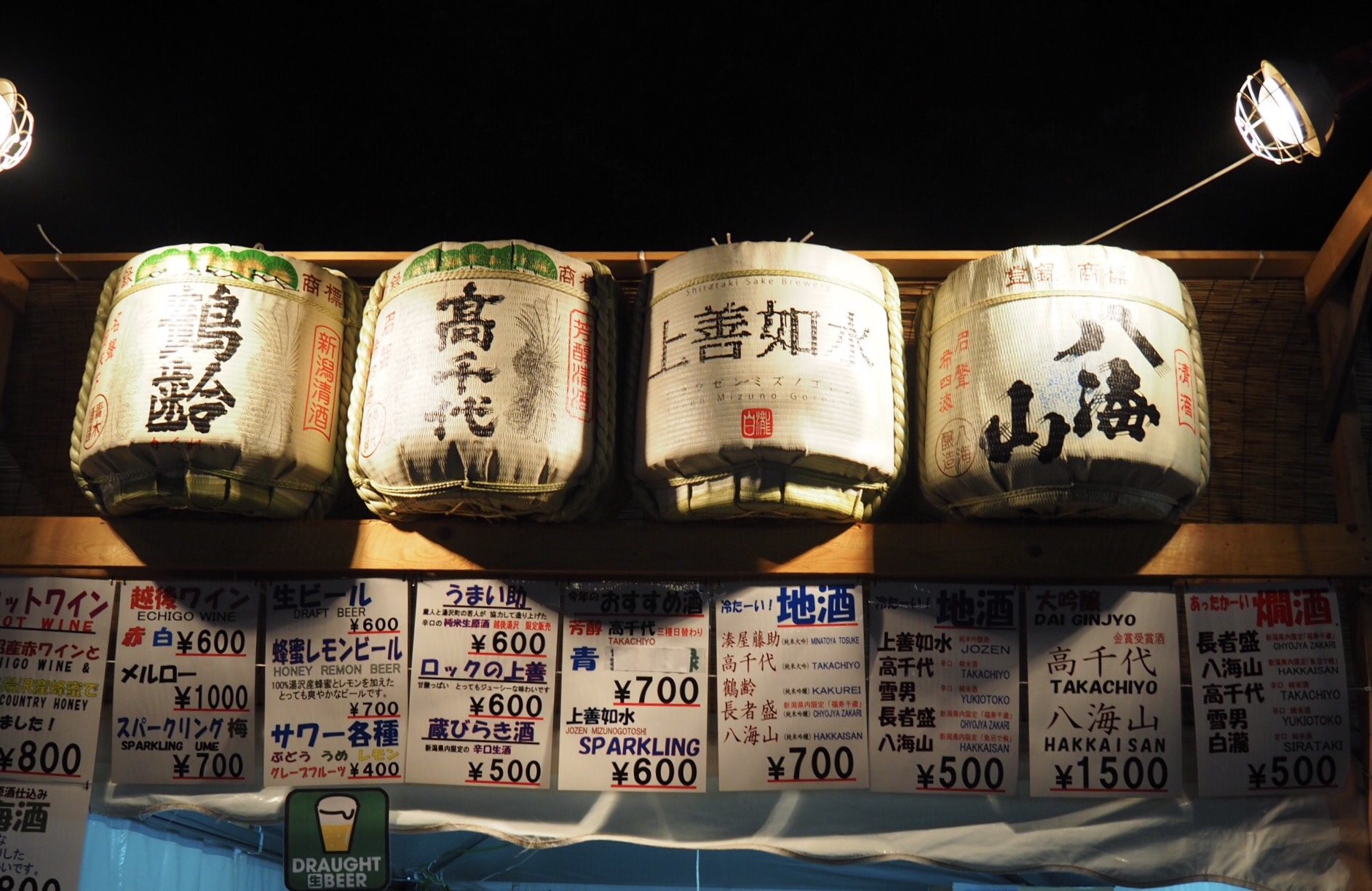Continuing with the funk/R&B theme over at the east end of the festival, Con Brio tried to top their extraordinary performance at the prefest party on Thursday night, and came pretty damn close. The crowd at the Field of Heaven wasn’t quite as stoked as the crowd at the Red Marquee, but it’s difficult to compare. The prefest party is all about anticipation. During the festival itself you have to prove yourself, and they did.
Lead singer Ziek McCarter was in his best Michael Jackson mood, spinning and sashaying and bumping and grinding and whooping to beat the band, which is difficult to do in this case since the band is so intensely funky. Thanks to a particularly loud and energetic sound check, a lot of people sauntering by from the Orange Cafe and Cafe de Paris decided to stick around, and they were quite satisfied. From the very first notes, the crowd was pumping and dancing.
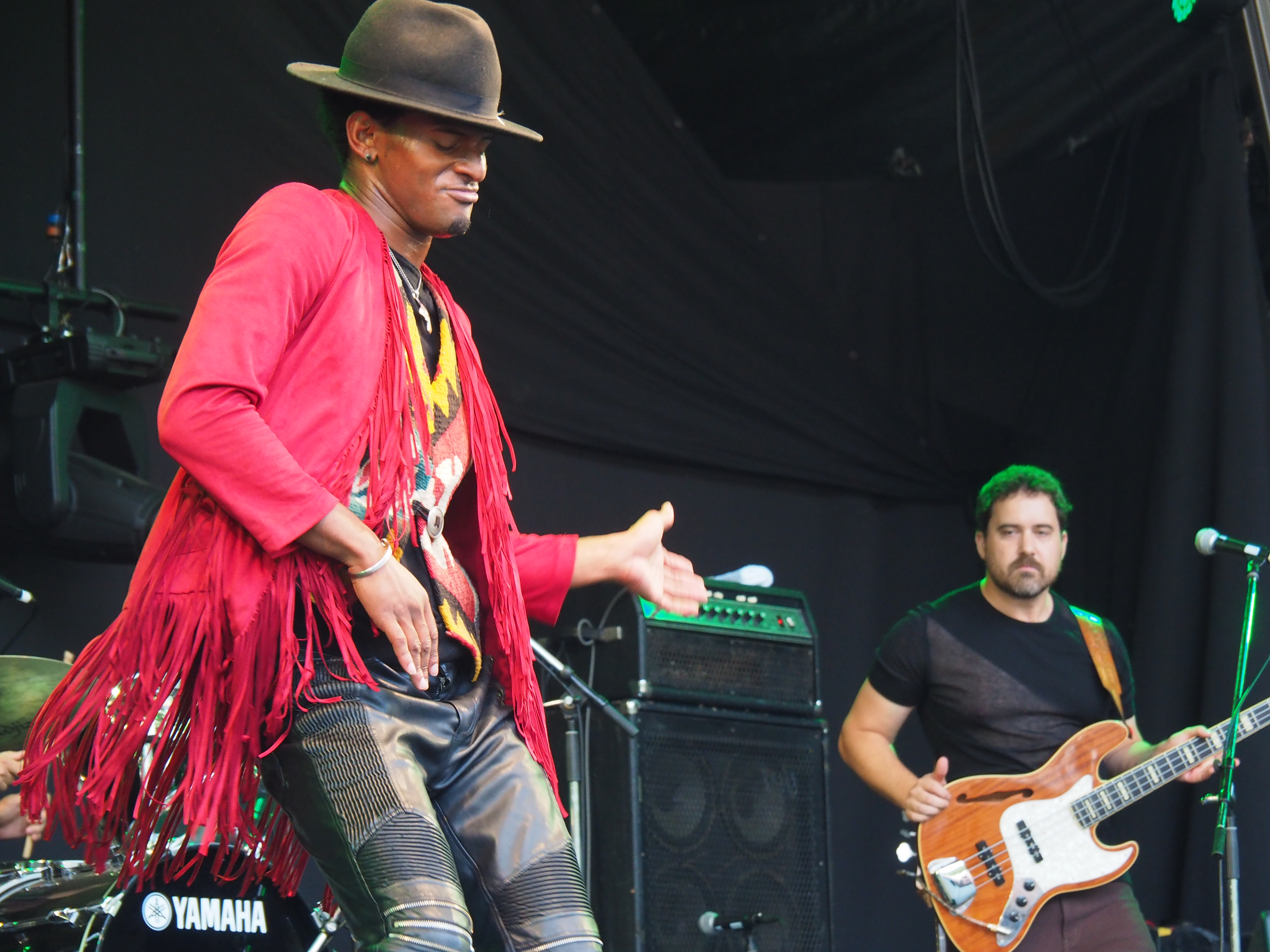
Con Brio | Mark Thompson photo
There was also a lot more jamming than there was at the Red Marquee, which is appropriate for the Field of Heaven, which was baptized by Phish in 1999. During “When the Sun Goes Down,” not only did McCarter get the crowd clapping louder than anytime I’ve heard in recent years, but every member took an extended solo. (Personally, we could have done with the synth solo) The atmosphere became so intense, security started asking people sitting down to get up and remove their chairs. There were thinking about the people who wanted to squeeze in and boogie, but, by rights, those people should not have been sitting down during such a show in the first place.
“This is the most beautiful place we’ve ever played,” McCarter said at one point, echoing more than one act we’ve seen during this festival alone. Their enthusiasm matched the hyperbole.
Since they’re from San Francisco, Con Brio’s version of JB’s “It’s a Man’s World” was reconfigured as “It’s a Woman’s World,” a slight blasphemy that we let slide. No such transgression was evident from The Heavy, the estimable hard R&B band from England, who was making their second appearance at Fuji Rock, and leader Kelvin Swaby made it a point to say that every chance he got.
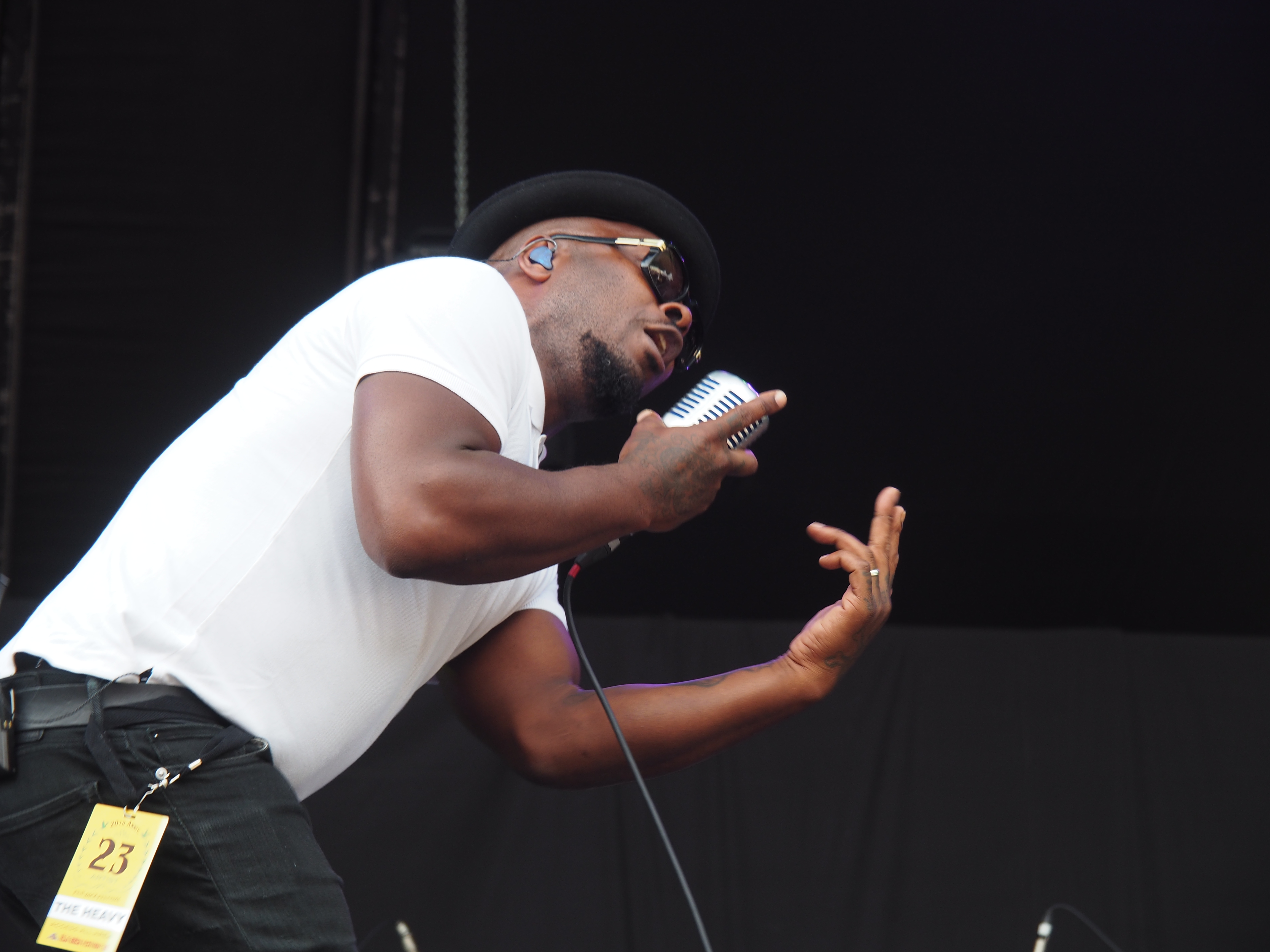
The Heavy | Mark Thompson photo
After the requisite, “this is the greatest fucking festival in the world,” Swaby repeatedly propped for the band’s new album, asking the crowd, somewhat ingenuously if they wanted to hear songs from it, as if they had a choice. In any case, they complied, even when Swaby kept instructing them how to singalong or react to certain lyrics in songs.
“When I say ‘cut it,’ go crazy,” he commanded, and people went crazy in their own fashion during the funk workout. During a Springsteeny R&B number, the crowd was asked to repeat certain lines, which they did. Gotta love the Japanese fan.
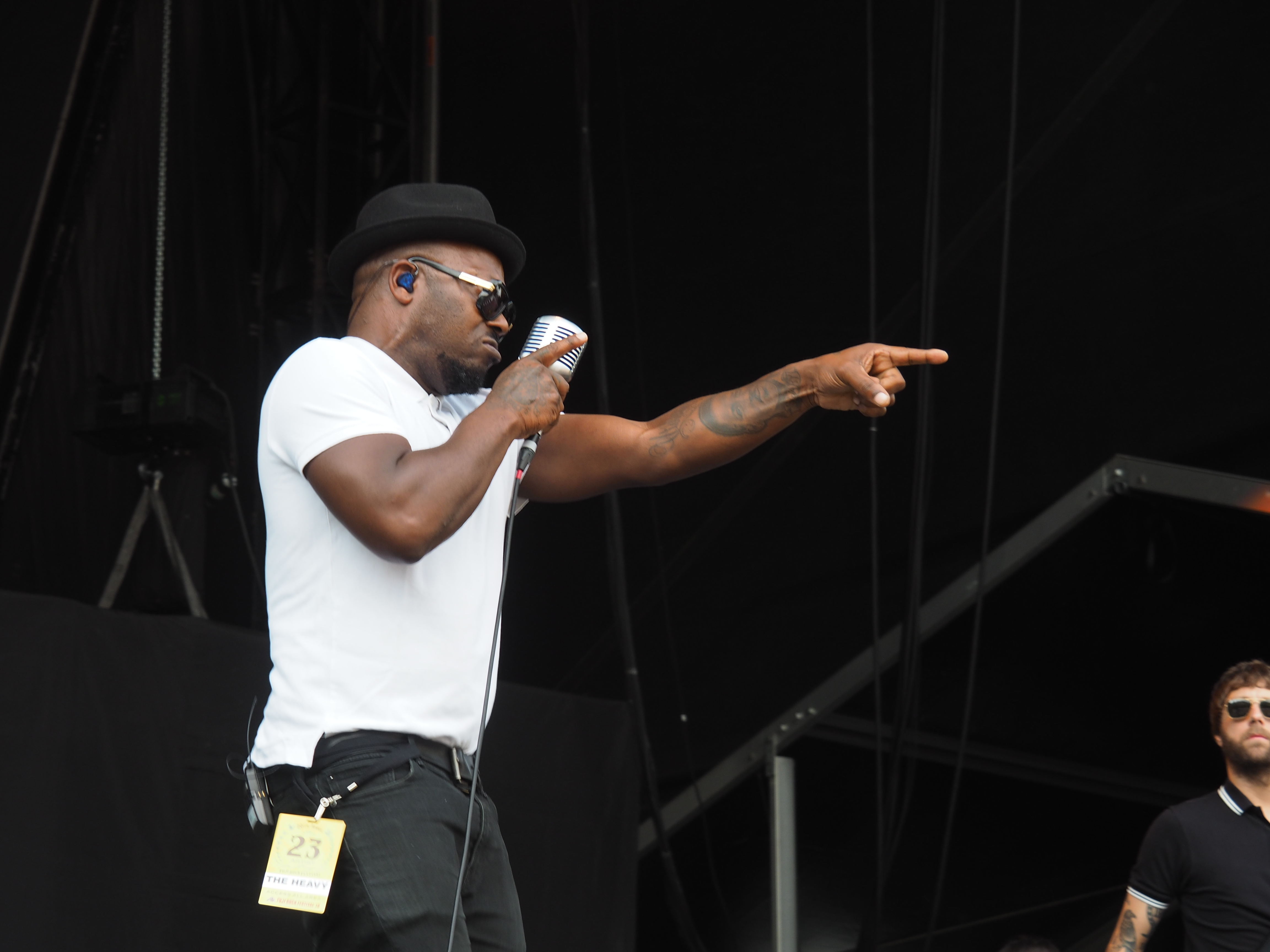
The Heavy | Mark Thompson photo
For what it’s worth, the show picked up a sizable crowd as the set progressed and the sun started setting in the west. It was a beautiful scene and the music eventually justified all the fussiness. Funk is like that.

